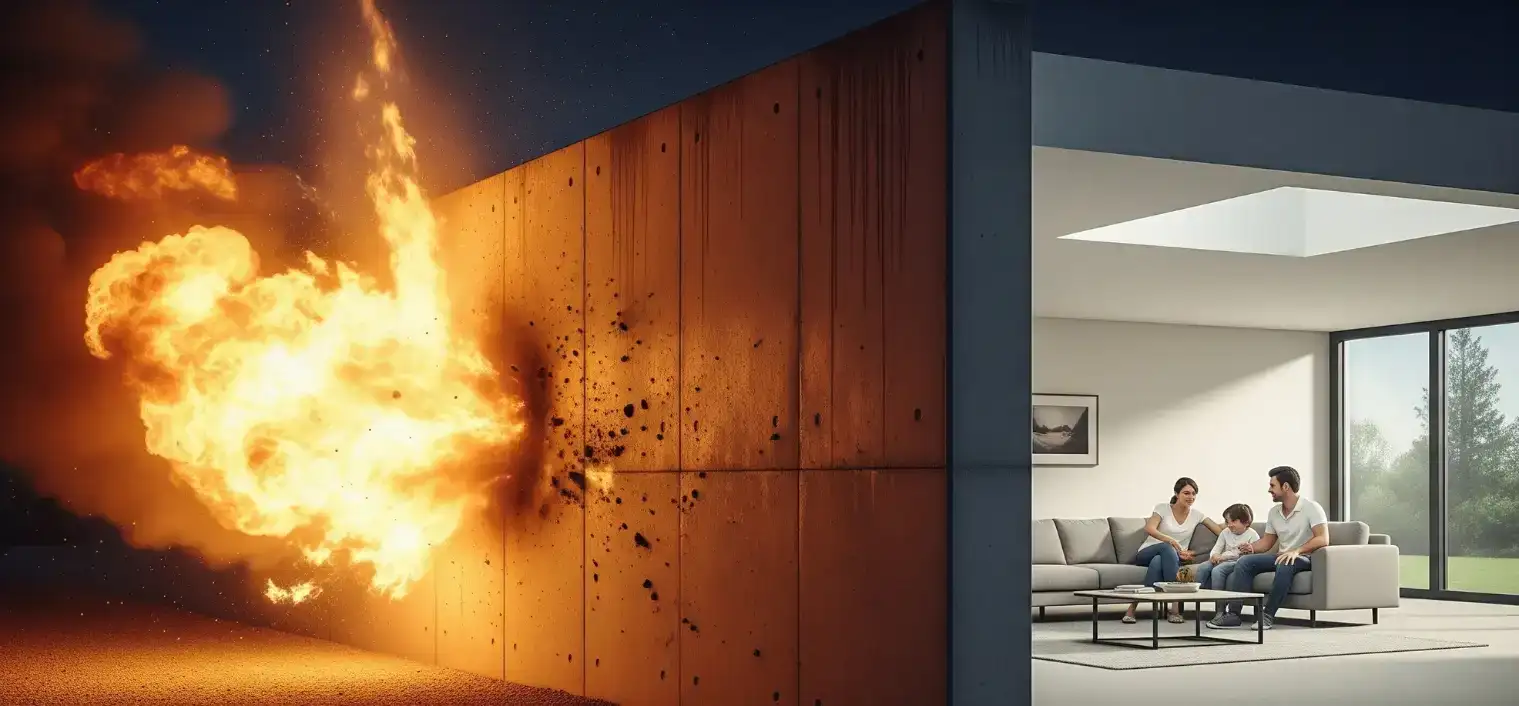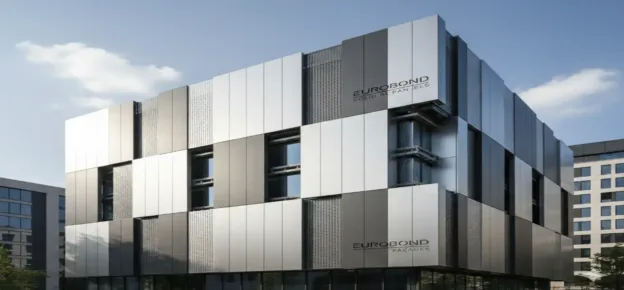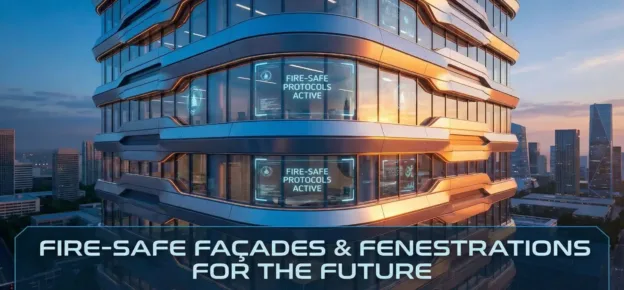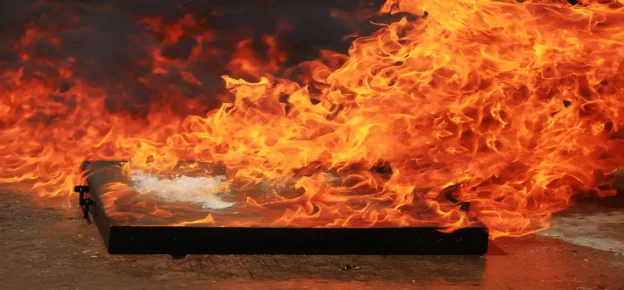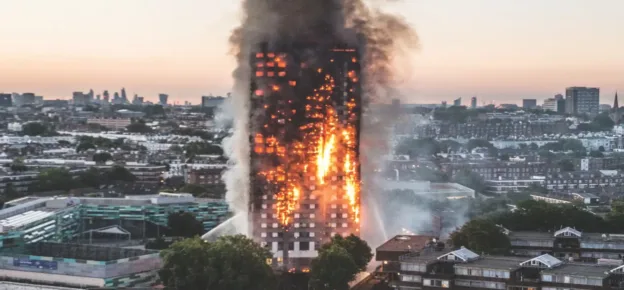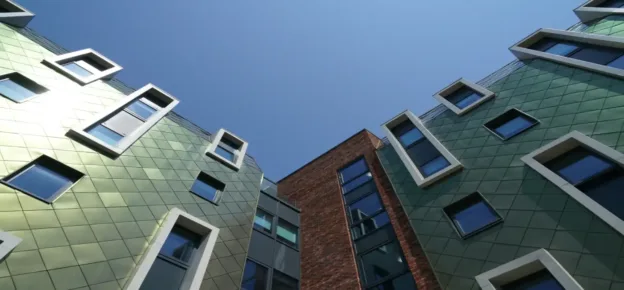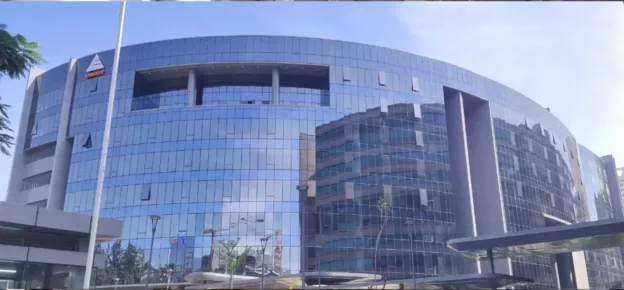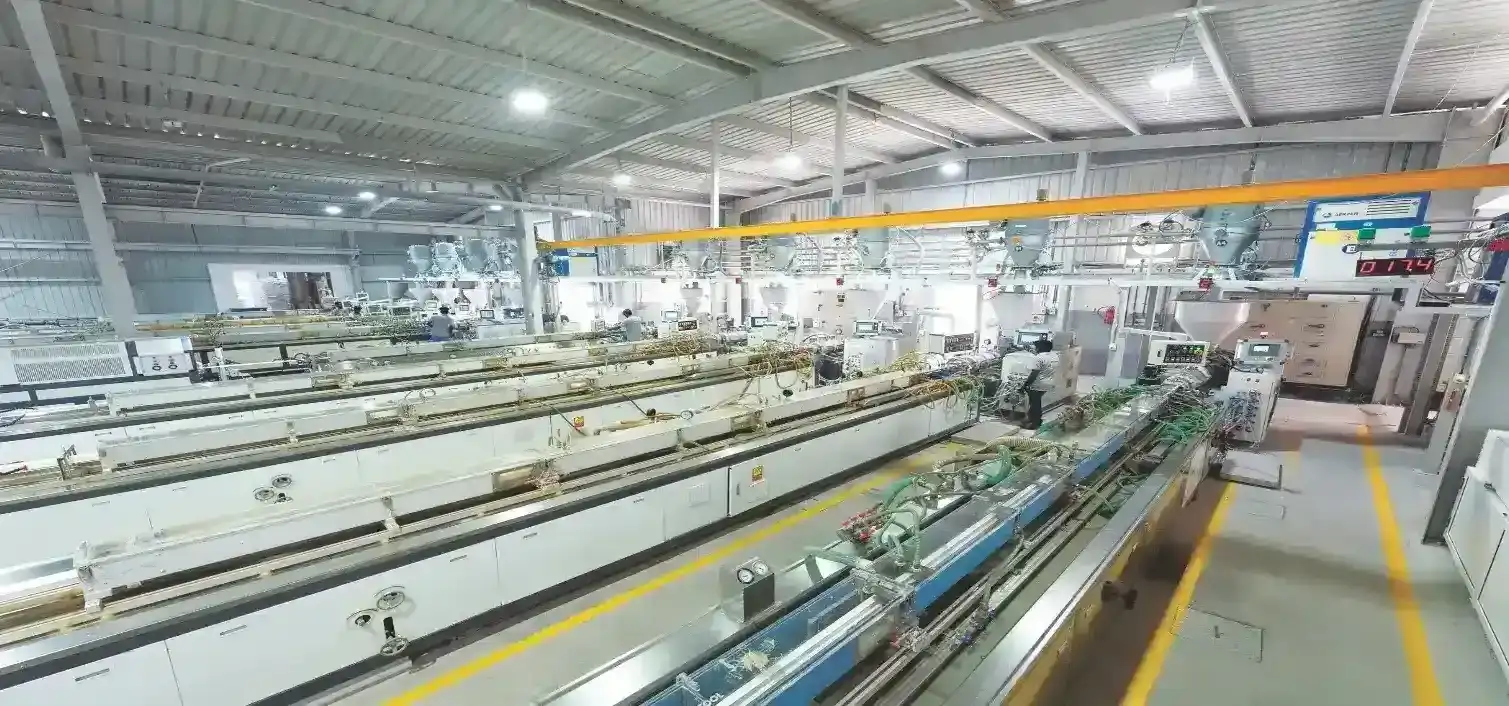When designing a fire-safe facade, it is important to consider the following factors:
- Materials: The materials used in the facade should have good reaction to fire properties, such as low flammability, low smoke generation, and low toxicity. Examples of suitable materials include non-combustible materials like stone, metal, and ceramics.
- Design: The design should include features such as fire-rated walls, fire-rated glazing, and fire-stops to prevent the spread of fire as a complete system. Additionally, the design should include effective means of smoke and heat ventilation to allow for safe evacuation in the event of a fire.
- Technologies: The use of fire-safety technologies, such as sprinklers, smoke alarms, and fire alarms, can greatly enhance the safety of the building in case of a fire.
- Building codes and regulations: The codes and regulations may include requirements for fire-resistance ratings, reaction to fire classification for materials, and performance specifications on building systems such as fire alarms and sprinklers.
- Fire modelling: Fire modelling can be used to predict the behaviour of fire and smoke in a building, which can inform the design of fire safety systems, such as the placement of smoke vents and the size of fire-rated walls and glazing.
- Maintenance: Regular maintenance and testing of fire safety systems and materials are crucial to ensure they are functioning correctly and able to effectively protect the building in the event of a fire.

Overall, it’s important to approach the design of a fire-safe building holistically, considering all the factors that will affect the building’s fire safety, and to work closely with fire protection engineers, architects and building code officials in the process.
Active fire protection systems and passive fire protection systems are two types of systems that can be used in building projects to enhance fire safety.
Active fire protection systems are designed to detect and suppress fires. Examples of active fire protection systems include:
- Fire alarms
- Sprinkler systems
- Fire suppression systems
- Fire extinguishers
Passive fire protection systems, on the other hand, are systems that are designed to slow the spread of fire and smoke and to protect building occupants from the effects of fire. Examples of passive fire protection systems include:
- Fire-rated walls and partitions:
- Fire-rated doors and windows:
- Fire-stops
- Smoke barriers
- Smoke ventilation systems
- Fireproofing
Both active and passive fire protection systems are important and must be used together to provide the best protection possible in case of a fire.

Standard Fire Resistance Tests Carried Out To Understand The Performance Of Façade And Fenestration Systems
Several standard fire tests can be carried out to understand the behaviour of fire on façade and fenestration systems. Some of the most commonly used tests include:
- ASTM E2307: Standard test method for determining the fire resistance of perimeter fire barriers using intermediate-scale, multi-story test apparatus
- ASTM E2874: Standard test method for determining the fire-test response characteristics of a building spandrel-panel assembly due to the external spread of fire.
- BS 8414:
- Part 1: Fire performance of external cladding systems. Test methods for non-load-bearing external cladding systems applied to the face of a building
- Part 2: Fire performance of external cladding systems. Test method for non-load-bearing external cladding systems fixed to and supported by a structural steel frame.
- EN 1364-3: Fire resistance tests for non-loadbearing elements –
- Part 3: Curtain walling – Full configuration (complete assembly)
- EN 1364-4: Fire resistance tests for non-loadbearing elements. Curtain walling – part configuration
- BS 476: This standard is used to test the fire resistance of various building elements, including walls, floors, and doors. The test involves exposing the element to a standardized fire exposure and measuring its ability to prevent the spread of fire and maintain integrity.
- NFPA 285: This standard is used to evaluate the fire performance of exterior wall assemblies, including façade and fenestration systems. The test involves exposing the wall assembly to simulated fire exposure and measuring its ability to prevent the spread of fire, smoke, and heat.
- NBC-2016: This standard is used for the design, construction, and renovation of buildings, structures, and works. It provides the minimum requirements for safety, health, accessibility, fire protection, energy efficiency, and environmental protection for buildings in India. – feels out of place as regulatory requirements are mentioned with test standards.
A few important clauses to consider: –
|
It is important to note that these tests are usually performed in a laboratory setting and may not accurately reflect the behaviour of fire in an actual building. Therefore, it’s important to also consider real-world factors such as building codes, local regulations, and the specific characteristics of the building when designing fire-safe façade and fenestration systems.
Ensuring Products Are Tested For Resistance To Fire

There are several ways to ensure that the products recommended or used on facades and fenestrations have been tested for resistance to fire:
- Third-party certification: Fire resistance systems should ideally be backed with valid third-party certification evidence, ensuring the tested and listed products are under audit, and the same should be reproduced at the project site.
- Check manufacturer’s literature: Product manufacturers will often provide information about the fire resistance of their products in their literature, including test results and certifications. The tested assemblies are what should be utilised at the project site to ensure no degradation in performance is present.
- Check building codes and standards: Many building codes and standards will have specific requirements for fire-resistance of building products, including façade and fenestration systems, and will often specify the required certifications and test standards. This should be the minimum to be followed in the project. Also, all key project stakeholders need to be educated and speak the same language to ensure no misinterpretation of the codes or test standards is present.
- Consult with experts: Consult with fire protection engineers, façade consultants, architects, and building code officials; they can help determine which products have been tested for fire resistance and meet the required standards for your project’s fire strategy.
- Ask for third-party testing: It is possible to ask for third-party testing for the products to ensure their fire resistance.
- Installation and inspection support: The manufacturer should provide mock-up and toolkit training, followed by regular inspections documented through a report to ensure the products or systems are installed as tested.
- System warranty: The project should be signed off on by a system warranty for the tested assembly.
It is important to note that, even if a product has passed a fire-resistance test, it does not guarantee that the product will perform as expected in an actual fire. Therefore, it’s important to consider factors such as the specific characteristics of the building and the local building codes and standards when selecting fire-resistant products for use in a specific building.
Latest Trends, Technologies, And Materials Which Make A Façade Fire Safe
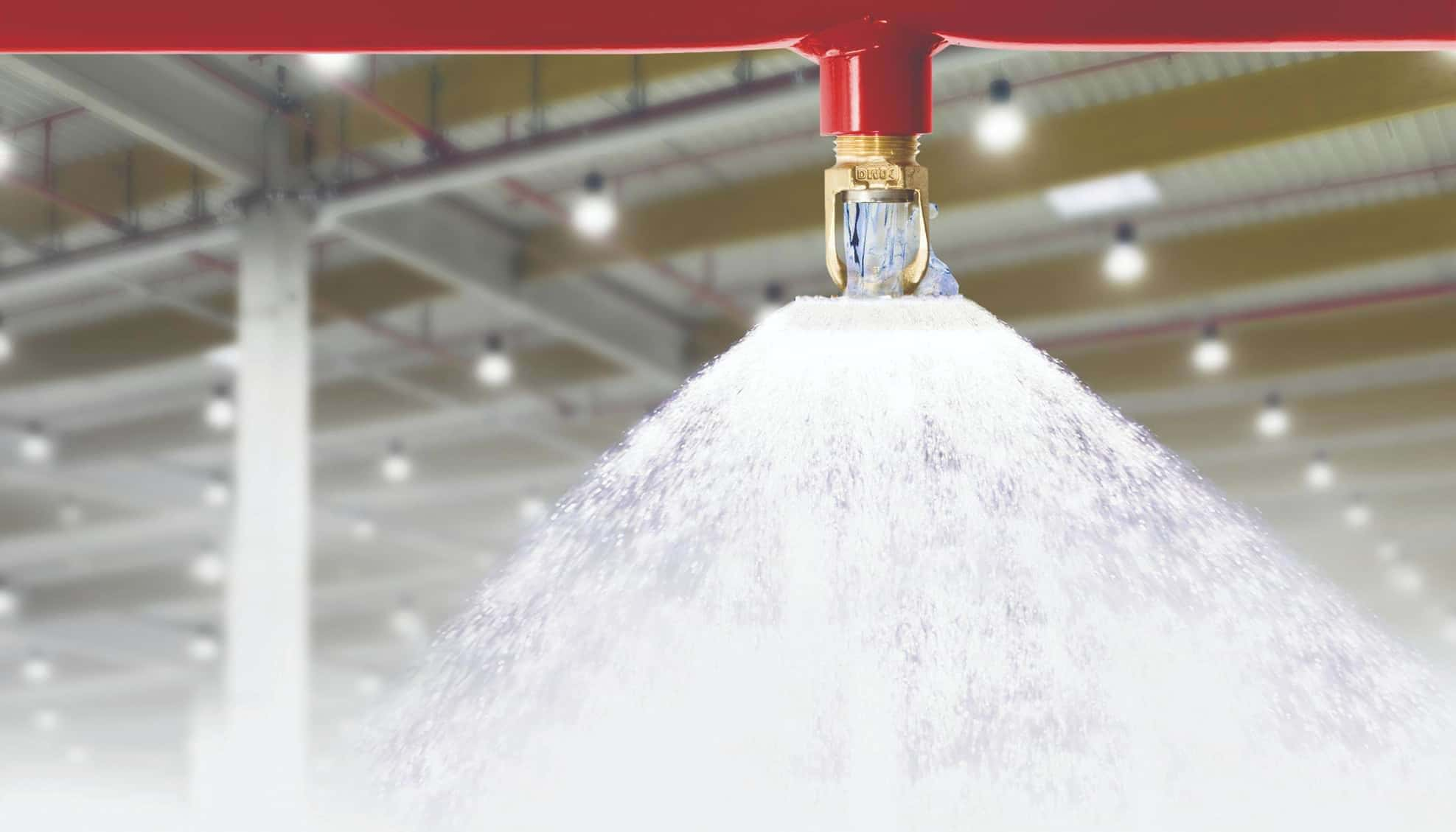
Several trends and technologies are currently being used in India to make facades fire safe:
- Non-combustible materials: A trend towards using non-combustible materials such as stone, metal, and ceramics in facades. These materials have good reaction to fire properties and can help prevent the spread of fire.
- Fire-resistant coatings and treatments: The use of fire-resistant coatings and treatments on traditional materials like wood and plaster to make them more fire-resistant.
- Insulated composite panels: These panels consist of a core material that is sandwiched between two metal sheets. They offer excellent thermal insulation properties, and there are also panels that provide good reaction to fire resistance. It is important to ensure systems tested to BS 8414 and NFPA 285 are utilised along with the tested horizontal and vertical cavity barriers.
- Fireproofing: This involves the application of fire-resistant materials to structural elements to slow the spread of fire.
- Fire-rated glazing: The use of fire-rated glazing in facades can help prevent the spread of fire and smoke.
- Fire-rated walls and partitions: These walls and partitions are designed to prevent the spread of fire and smoke for a certain period.
- Fire-rated doors and windows: These doors and windows are designed to prevent the spread of fire and smoke for a certain period.
- Smoke barriers: These barriers are designed to prevent the spread of smoke and to provide a means of smoke and heat ventilation.
- Smoke ventilation systems: These systems are designed to remove smoke and heat from a building to provide a safer means of evacuation.
- Building Automation Systems (BAS): Building Automation Systems (BAS) can be integrated with fire alarms, smoke alarms, and sprinklers to provide an early warning of a fire and help with an orderly evacuation of the building.
It is important to note that these trends and technologies are not mutually exclusive, and many buildings will use a combination of these methods to provide the best fire safety protection possible. Building codes and regulations must be adhered to ensure compliance with fire safety requirements.
